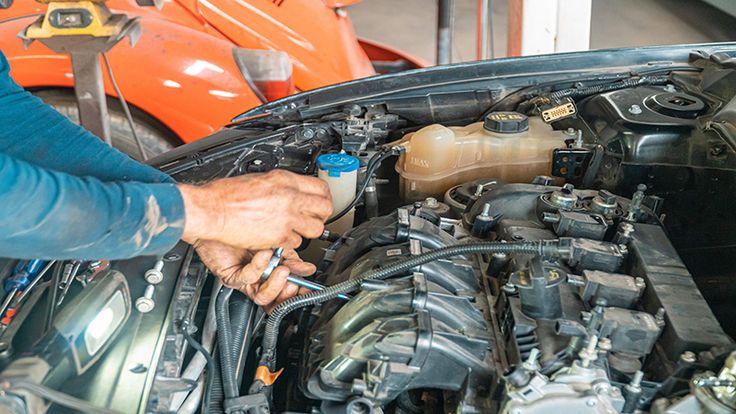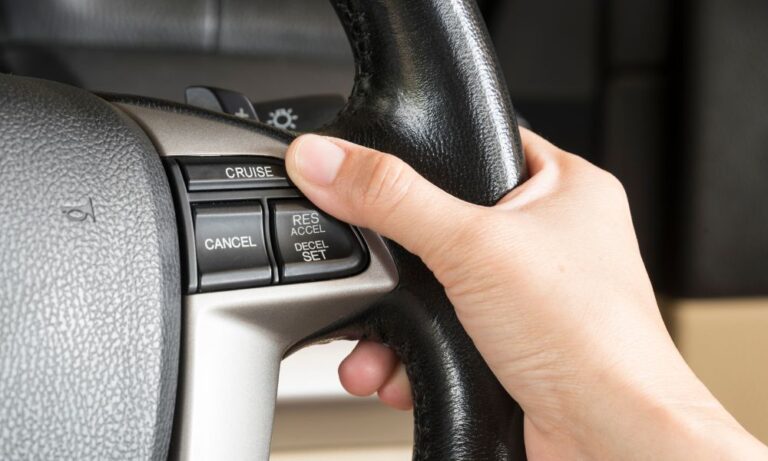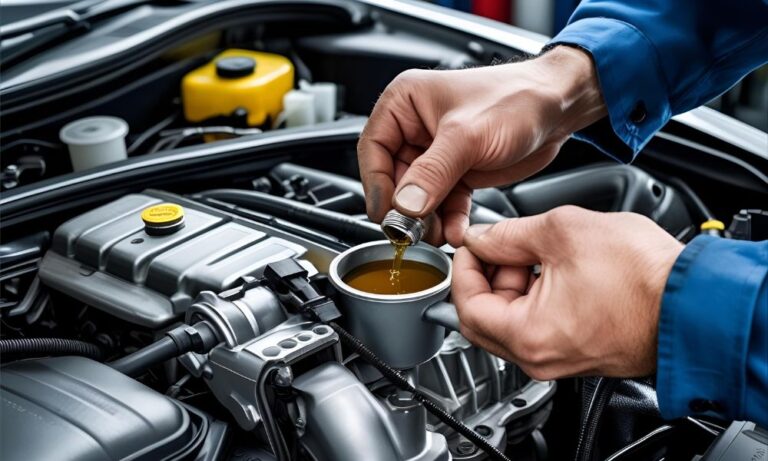How to Clean Leather Car Seats
Any automobile would benefit from the opulent addition of leather car seats, which radiate comfort and style. Great luxury does, however, come with the cost of appropriate upkeep. Despite its durability, leather may eventually lose its look and feel due to spills, oils, dirt, and environmental variables. Knowing how to clean leather car seats properly is essential, as maintaining them the right way ensures their longevity and keeps them looking fresh. In order to keep the inside of your car as attractive as the day you purchased it, we will go over the finest methods and advice in this guide for maintaining the softness and immaculate appearance of your leather car seats.
Why Cleaning Leather Car Seats is Important
In addition to being visually beautiful, leather automobile seats are also quite practical. They provide A high-end feel, comfort, and durability that fabric seats cannot match. The leather may lose its shine over time as a result of skin oils, dust, and debris building up on the surface. Leather may crack, fade, or get discolored without the right cleaning and conditioning, necessitating costly repairs or replacement. These problems may be avoided with regular cleaning and conditioning of your leather vehicle seats, guaranteeing that they will continue to feel and look like new for many years to come.
Understanding Leather Car Seats: What You Need to Know
It’s essential to comprehend the characteristics of leather and its interactions with the environment before beginning the cleaning procedure. Since leather is A natural substance derived from animal skin, it is porous and has the ability to absorb dirt, oils, and moisture. Additionally, it is vulnerable to strong chemicals, sunshine, and very high or low temperatures. You may choose between full-grain leather and synthetic leather for your automobile seats. Knowing the sort of leather your seats are constructed of is essential since different leathers need different cleaning and conditioning techniques. A thorough comprehension guarantees that you choose the best cleaning supplies and methods for the best outcomes.
Signs Your Leather Car Seats Need Cleaning
However, some signs indicate it’s time to clean your seats. If you notice any of the following, it’s a good idea to give your seats a thorough cleaning:
- Dirt and Grime Build-Up: If you notice visible dirt, stains, or discoloration on the surface, it’s time to clean the leather.
- Fading or Cracking: Leather that looks faded or begins to crack is a clear sign of neglect. Cleaning and conditioning can prevent further damage.
- Stubborn Stains: Spills from coffee, food, or other substances can leave stains on leather seats. These need to be addressed promptly to prevent permanent damage.
- Odors: Leather seats can sometimes absorb odors from food, pets, or general use. Regular cleaning helps remove unwanted smells.
Essential Tools and Materials for Cleaning Leather Car Seats
To clean your leather seats effectively, you will need a few key tools and materials. While it’s tempting to use household cleaners, leather requires specialized care. Here’s a list of what you’ll need:
- Leather Cleaner: Choose a mild leather cleaner that is specifically formulated for car upholstery. Avoid harsh chemicals that could damage the leather.
- Microfiber Cloths: Microfiber cloths are ideal for wiping down leather because they are gentle and won’t scratch the surface.
- Soft-Bristle Brush: A soft brush is perfect for loosening dirt and debris from the seams and crevices of the leather.
- Leather Conditioner: After cleaning, a conditioner will restore moisture to the leather, keeping it soft and supple.
- Vacuum Cleaner: Use a vacuum to remove dust and debris from the seats before you begin cleaning.
Having the right tools ensures that you can clean your leather car seats safely and effectively, without causing any damage.
How to Clean Leather Car Seats: A Step-by-Step Process
Cleaning leather car seats is not a complicated process, but it does require attention to detail. By following these steps, you can ensure that your seats are cleaned and conditioned properly.
- Step 1: Vacuuming the Leather Seats Thoroughly
Begin by using a vacuum cleaner with a soft brush attachment to remove loose dirt, dust, and debris. This step is essential, as it prevents dirt from being rubbed into the leather when cleaning. - Step 2: Applying the Leather Cleaner Correctly
Spray the leather cleaner onto a microfiber cloth, not directly onto the seats, to avoid oversaturation. Gently wipe the seats in circular motions, making sure to cover every inch. For stubborn stains, apply a small amount of cleaner directly to the affected area and allow it to sit for a few minutes before wiping it away. - Step 3: Scrubbing Away Dirt with the Right Brush
For areas with more embedded dirt, use a soft-bristle brush to agitate the cleaner and lift the grime. Be sure to use light pressure, as harsh scrubbing can damage the leather. Afterward, wipe away any excess cleaner with a clean microfiber cloth. - Step 4: Wiping and Drying Your Seats Properly
Once you’ve cleaned the leather, take a dry microfiber cloth to remove any leftover cleaner. Allow the seats to air dry for a few minutes before applying conditioner. - Step 5: Conditioning the Leather to Restore Softness and Shine
Leather tends to dry out over time, so conditioning is crucial to keep it soft and supple. Allow the conditioner to absorb for a few hours or overnight before using the seats again.
Choosing the Right Leather Cleaner: Natural vs. Commercial Products
Selecting the best leather cleaner among the several available is crucial to keeping your seats looking great. For mild cleaning, natural cleaning products like castile soap or vinegar and water might work well. But they may not be powerful enough to remove tough stains. Commercial leather cleaners, on the other hand, are made especially for automobile upholstery and are often better at removing oil and filth without causing any harm to the leather. To be sure the cleaner is safe to use on vehicle seats, always check the product labels.
How to Clean Stubborn Stains on Leather Seats
Stains can be one of the most frustrating challenges when it comes to cleaning leather car seats. For tough stains, like ink, oil, or food, here are some helpful tips:
- Oil and Grease Stains: Use a small amount of baking soda to absorb the oil. Let it sit for a few minutes and then gently brush it off with a soft-bristle brush.
- Ink Stains: Dab the stain with a cotton ball soaked in rubbing alcohol. Be sure to test the alcohol on a hidden area of the leather first to ensure it doesn’t cause discoloration.
- Food and Drink Spills: Blot up any excess liquid with a clean cloth. For stubborn stains, use a mild leather cleaner and a microfiber cloth to gently scrub the area.
Preventing Damage: How to Safely Clean Leather Seats
It’s crucial to refrain from using abrasive instruments, strong chemicals, or excessive wetness while cleaning leather seats. To be sure a new cleaning solution won’t harm or discolor a tiny, concealed spot, always try it there first. Furthermore, avoid oversaturating the leather with water or cleaning as this may cause cracking or discoloration. To preserve the integrity of the leather, always adhere to the cleaning and conditioning recommendations provided by the manufacturer.
How Often Should You Clean Your Leather Car Seats?
A number of variables, like how often the vehicle is used and the driving conditions, affect how frequently you should clean your leather car seats. As a general rule, cleaning should be done every three to six months. However, you may need to clean your vehicle’s seats more regularly if you live in a region that is very humid or dusty, or if you drive your car a lot. While comprehensive cleaning should be done sometimes to get rid of accumulated dirt and oils, regular light cleaning may assist in keeping the leather looking nice.
How to Protect Leather Car Seats After Cleaning
Once your leather seats are clean and conditioned, it’s essential to protect them to prevent future damage. Consider using a leather protectant spray that creates a barrier against stains and UV damage. Protectants can also help repel dirt and moisture, making future cleanings easier. Applying a UV protectant can also help preserve the color of your leather, preventing it from fading over time.
Maintaining the Softness and Shine of Leather Seats
To keep your leather car seats soft and shiny, it’s important to condition them regularly. Leather can dry out and lose its natural shine if it isn’t properly cared for. Use a high-quality leather conditioner that is designed to restore moisture and flexibility. Conditioning also prevents cracking, keeping the leather smooth and supple.
DIY Leather Car Seat Cleaning vs. Professional Services
While cleaning your leather seats yourself can save money, there are times when professional cleaning is necessary. If your seats are severely stained, have deep cracks, or if you’re unsure about the cleaning process, hiring a professional can be a wise decision. Professionals have access to specialized tools and products that can clean your seats more thoroughly than DIY methods. However, for routine maintenance, DIY cleaning is often sufficient.
How to Fix Cracked or Faded Leather Seats
Over time, leather can crack or fade, especially if it’s exposed to direct sunlight or hasn’t been properly maintained. Minor cracks can often be repaired with a leather repair kit, which includes dyes, conditioners, and fillers to restore the leather’s appearance. For more severe damage, such as large cracks or deep fading, it’s best to consult a professional for repairs.
Conclusion: Keeping Your Leather Car Seats Clean and Well-Maintained
Properly cleaning and maintaining your leather car seats is essential to preserving their appearance and comfort. With the right tools, products, and techniques, you can keep your leather seats looking and feeling like new. Regular cleaning, conditioning, and protection will ensure that your leather car seats continue to add value and luxury to your vehicle for years to come.







